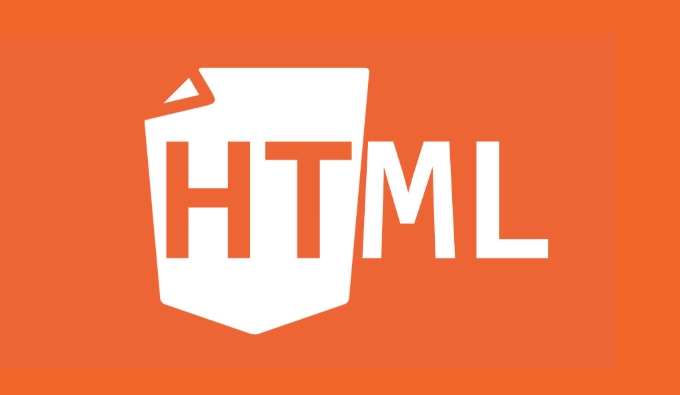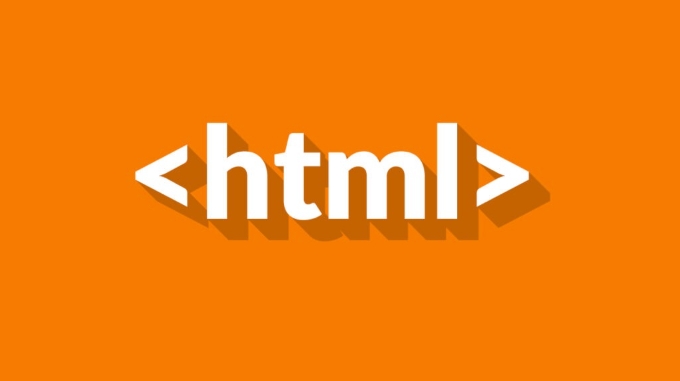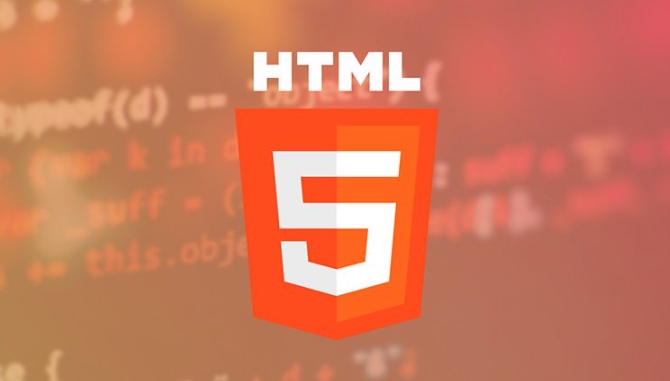What is the purpose and usage of the html template element?
Jul 09, 2025 am 01:48 AMThe element of HTML is used to store HTML structures that are not rendered immediately. It is cloned through JavaScript and inserted into the page to achieve reuse and dynamic update of content. The advantage is to keep the page clean and avoid flickering of unreleased content; it is often found in duplicate UI components, dynamic page updates and template localization management. Specific usage steps: 1. Define the template tag with id; 2. Cloning the content with document.importNode; 3. Modifying the cloned node data; 4. Insert it into the DOM. Notes include avoiding ID conflicts, using class selectors, deep copy nodes, and placing template locations reasonably. In addition, the scripts in the template will not be automatically executed and need to be manually triggered after inserting the page.

The <template></template> element in HTML is like a blueprint for content that you don't want to render right away. It's a way to store bits of HTML that you can clone and insert into your page later using JavaScript. This is super handy when you need to reuse the same structure multiple times, especially with dynamic data.

Why Use the <template></template> Element?
You might wonder why not just write the HTML directly or generate it all with JavaScript. The main advantage of <template></template> is that it keeps your markup clean and organized. Browsers won't render what's inside a <template></template> tag until you tell them to, which means no flash of unstyled or incomplete content.

Here are some common use cases:
- Repeating UI elements like cards, list items, or form fields
- Dynamically updating parts of a page without full reloads
- Keeping templates close to where they're used (in the HTML file itself)
How to Use <template></template> in Practice
Let's say you have a card layout that shows user profiles. Instead of building each one from scratch in JavaScript, you can define a template once and clone it as needed.

Here's how you'd set it up:
<template id="user-card">
<div class="card">
<h3></h3>
<p>Email: <span></span></p>
</div>
</template>Then, in JavaScript:
const template = document.getElementById('user-card'); const newUserCard = document.importNode(template.content, true); newUserCard.querySelector('h3').textContent = 'Jane Doe'; newUserCard.querySelector('span').textContent = 'jane@example.com'; document.body.appendChild(newUserCard);
This approach gives you structured, reusable blocks without messy string concatenation or repeated DOM creation.
Tips for Working with Templates
- Keep IDs unique – Since templates are cloned, avoid putting
idattributes inside them unless you're sure they won't cause conflicts. - Use classes for styling – Much safer than relying on IDs.
- Don't forget to deep clone – When using
importNode, make sure to passtrueas the second argument so nested nodes come along too. - Place templates strategically – You can put them anywhere in the page — head, body, doesn't matter — but placing them near where they'll be used can help keep things readable.
One Thing People Often Miss
A lot of folks don't realize that everything inside a <template></template> is parsed but not executed. So scripts inside won't run until you add them to the page. That's great for security and performance, but if you're expecting something to execute immediately, it won't — unless you specifically trigger it after insertion.
Basically that's it.
The above is the detailed content of What is the purpose and usage of the html template element?. For more information, please follow other related articles on the PHP Chinese website!

Hot AI Tools

Undress AI Tool
Undress images for free

Undresser.AI Undress
AI-powered app for creating realistic nude photos

AI Clothes Remover
Online AI tool for removing clothes from photos.

Clothoff.io
AI clothes remover

Video Face Swap
Swap faces in any video effortlessly with our completely free AI face swap tool!

Hot Article

Hot Tools

Notepad++7.3.1
Easy-to-use and free code editor

SublimeText3 Chinese version
Chinese version, very easy to use

Zend Studio 13.0.1
Powerful PHP integrated development environment

Dreamweaver CS6
Visual web development tools

SublimeText3 Mac version
God-level code editing software (SublimeText3)

Hot Topics
 Python web development framework comparison: Django vs Flask vs FastAPI
Sep 28, 2023 am 09:18 AM
Python web development framework comparison: Django vs Flask vs FastAPI
Sep 28, 2023 am 09:18 AM
Python web development framework comparison: DjangovsFlaskvsFastAPI Introduction: In Python, a popular programming language, there are many excellent web development frameworks to choose from. This article will focus on comparing three popular Python web frameworks: Django, Flask and FastAPI. By comparing their features, usage scenarios and code examples, it helps readers better choose the framework that suits their project needs. 1. Django
 How to get started with web development using C++?
Jun 02, 2024 am 11:11 AM
How to get started with web development using C++?
Jun 02, 2024 am 11:11 AM
To use C++ for web development, you need to use frameworks that support C++ web application development, such as Boost.ASIO, Beast, and cpp-netlib. In the development environment, you need to install a C++ compiler, text editor or IDE, and web framework. Create a web server, for example using Boost.ASIO. Handle user requests, including parsing HTTP requests, generating responses, and sending them back to the client. HTTP requests can be parsed using the Beast library. Finally, a simple web application can be developed, such as using the cpp-netlib library to create a REST API, implementing endpoints that handle HTTP GET and POST requests, and using J
 What are the advantages and disadvantages of C++ compared to other web development languages?
Jun 03, 2024 pm 12:11 PM
What are the advantages and disadvantages of C++ compared to other web development languages?
Jun 03, 2024 pm 12:11 PM
The advantages of C++ in web development include speed, performance, and low-level access, while limitations include a steep learning curve and memory management requirements. When choosing a web development language, developers should consider the advantages and limitations of C++ based on application needs.
 Reimagining Architecture: Using WordPress for Web Application Development
Sep 01, 2023 pm 08:25 PM
Reimagining Architecture: Using WordPress for Web Application Development
Sep 01, 2023 pm 08:25 PM
In this series, we will discuss how to build web applications using WordPress. Although this is not a technical series where we will look at code, we cover topics such as frameworks, fundamentals, design patterns, architecture, and more. If you haven’t read the first article in the series, I recommend it; however, for the purposes of this article, we can summarize the previous article as follows: In short, software can be built on frameworks, software can Extend the base. Simply put, we distinguish between framework and foundation—two terms that are often used interchangeably in software, even though they are not the same thing. WordPress is a foundation because it is an application in itself. It's not a framework. For this reason, when it comes to WordPress
 What are the common application scenarios of Golang in software development?
Dec 28, 2023 am 08:39 AM
What are the common application scenarios of Golang in software development?
Dec 28, 2023 am 08:39 AM
As a development language, Golang has the characteristics of simplicity, efficiency, and strong concurrency performance, so it has a wide range of application scenarios in software development. Some common application scenarios are introduced below. Network programming Golang is excellent in network programming and is particularly suitable for building high-concurrency and high-performance servers. It provides a rich network library, and developers can easily program TCP, HTTP, WebSocket and other protocols. Golang's Goroutine mechanism allows developers to easily program
 PHP's Current Status: A Look at Web Development Trends
Apr 13, 2025 am 12:20 AM
PHP's Current Status: A Look at Web Development Trends
Apr 13, 2025 am 12:20 AM
PHP remains important in modern web development, especially in content management and e-commerce platforms. 1) PHP has a rich ecosystem and strong framework support, such as Laravel and Symfony. 2) Performance optimization can be achieved through OPcache and Nginx. 3) PHP8.0 introduces JIT compiler to improve performance. 4) Cloud-native applications are deployed through Docker and Kubernetes to improve flexibility and scalability.
 JavaScript and the Web: Core Functionality and Use Cases
Apr 18, 2025 am 12:19 AM
JavaScript and the Web: Core Functionality and Use Cases
Apr 18, 2025 am 12:19 AM
The main uses of JavaScript in web development include client interaction, form verification and asynchronous communication. 1) Dynamic content update and user interaction through DOM operations; 2) Client verification is carried out before the user submits data to improve the user experience; 3) Refreshless communication with the server is achieved through AJAX technology.
 The Future of HTML, CSS, and JavaScript: Web Development Trends
Apr 19, 2025 am 12:02 AM
The Future of HTML, CSS, and JavaScript: Web Development Trends
Apr 19, 2025 am 12:02 AM
The future trends of HTML are semantics and web components, the future trends of CSS are CSS-in-JS and CSSHoudini, and the future trends of JavaScript are WebAssembly and Serverless. 1. HTML semantics improve accessibility and SEO effects, and Web components improve development efficiency, but attention should be paid to browser compatibility. 2. CSS-in-JS enhances style management flexibility but may increase file size. CSSHoudini allows direct operation of CSS rendering. 3.WebAssembly optimizes browser application performance but has a steep learning curve, and Serverless simplifies development but requires optimization of cold start problems.






